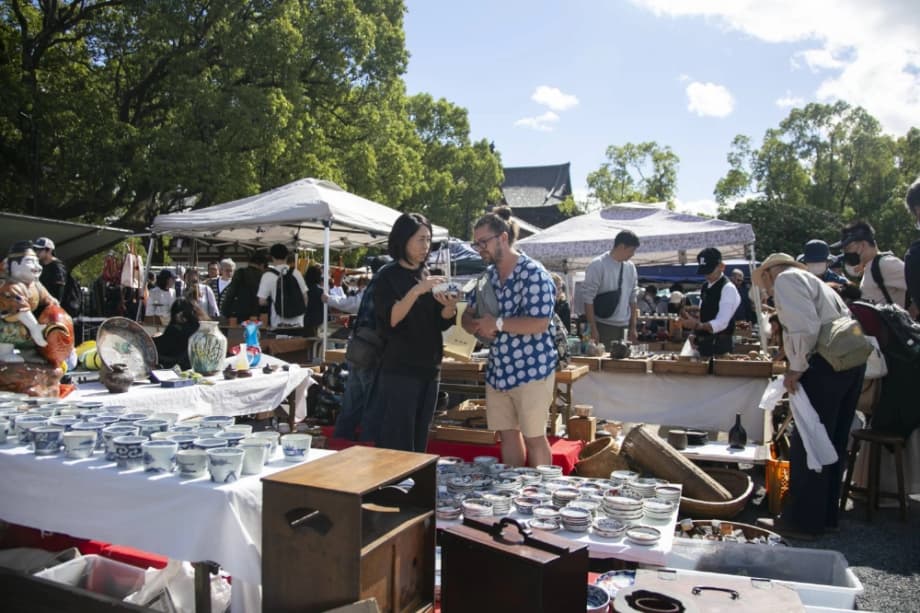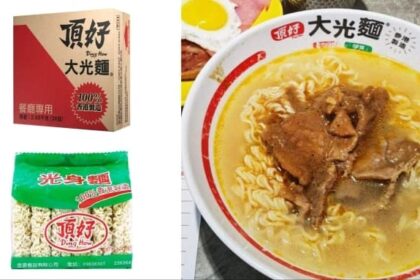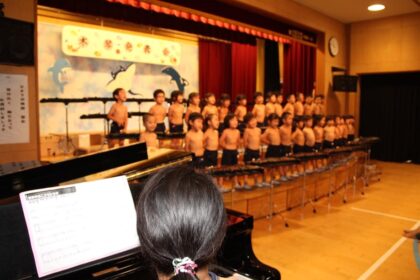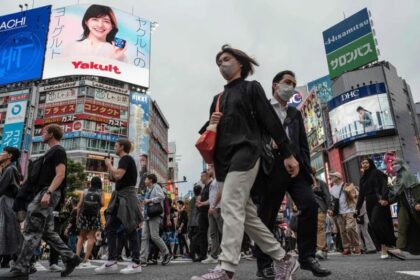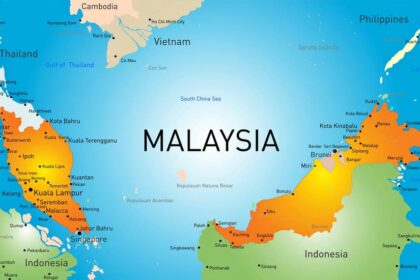Why reuse is gaining ground in Japan
Japan is moving reuse from a niche habit to a mainstream way to shop and manage resources. The Environment Ministry plans to publish a national road map by March 2026 that sets medium to long term measures to expand reuse, a core part of the national reduce, reuse, recycle slogan. Private sector estimates indicate the market has grown from 1.99 trillion yen in 2017 to 3.12 trillion yen in 2023, with projections of about 4 trillion yen by 2030. Growth reflects a mix of cultural values, new digital platforms, and practical benefits for households and businesses.
- Why reuse is gaining ground in Japan
- How big is the market, and where it is heading
- The platforms and players powering growth
- What local governments are doing
- Fashion leads, but other sectors are rising
- Beyond consumer goods, reuse is reshaping energy and materials
- Challenges that could slow momentum
- What this shift means for shoppers and brands
- How Japan fits into regional and global trends
- Highlights
Reuse sits comfortably with the long standing Japanese idea of mottainai, a sense of regret over waste. That ethic has fresh relevance as families manage tighter budgets and as companies face pressure to cut emissions and material waste. Consumer attitudes toward secondhand goods are shifting fast. A Ministry of the Environment survey in 2024 found that 44.1 percent of citizens bought secondhand goods. Younger shoppers in particular use smartphone apps to sell and buy items, while established retailers have built quality standards and warranties that give buyers confidence.
Local governments also play a growing role. Municipalities are opening reuse centers, hosting swap events, and running repair services that keep products in circulation longer. The national policy push aims to help these local efforts scale, improve logistics and data sharing, and set guidance for emerging sectors where reuse is still developing. The result is a wider circular economy that treats used goods as assets rather than waste, and invites companies to design products for multiple lives.
How big is the market, and where it is heading
Measured across categories such as fashion, electronics, media, home goods, vehicles, and niche specialties, Japan’s reuse market reached about 3.12 trillion yen in 2023. Forecasts place the total near 4 trillion yen by 2030. That implies steady growth from 2023 levels, building on the stronger gains seen from 2017 through the early 2020s when mobile marketplaces accelerated person to person trade. The fashion segment alone accounted for roughly 1 trillion yen in 2023, reflecting rising demand for quality apparel, vintage items, watches, jewelry, and kimonos.
Looking back before the pandemic, research on fashion resale found a domestic market of roughly 720 billion yen in 2019, up more than 16 percent from the prior year. Analysts expected fashion resale to approach 1 trillion yen around 2022 as flea market apps reduced friction and broadened the audience. That shift redistributed activity between business to consumer sellers and direct person to person sales. Cosmetics and everyday accessories saw brisk trading on consumer apps, especially among younger users, while high grade luxury goods continued to move through specialist stores and authenticated marketplaces.
Digital platforms are the engine behind much of this growth. Consumer to consumer apps and online auctions made selling simple for households and gave buyers transparent prices and social proof. In recent years, the reuse business within a major internet group that runs Yahoo Japan services exceeded 1 trillion yen in transaction value for the first time, showing how scaled platforms can expand the market. Traditional chains also adapted. Bookoff, Komehyo, and others improved buy back processes, condition grading, and refurbishing. The net result is more liquidity for used products, a wider range of price points, and more reasons for consumers to consider secondhand first.
The platforms and players powering growth
Mercari, founded in 2013, helped redefine secondhand shopping in Japan. Its simple listing flow, in app shipping and payments, and buyer protection brought trust to person to person sales. The company leaned into safety features, countering fears about counterfeit goods and damaged items. Successive rivals and niche apps followed, focusing on categories such as fashion, toys, and media. Authentication and appraisal services, some supported by AI based tools and experienced staff, now sit on top of these platforms, especially for luxury bags, watches, and streetwear. That gives buyers confidence in condition and authenticity while boosting resale values for brands.
Large ecommerce ecosystems also matter. Yahoo Auctions and Yahoo Flea Market connect millions of users, while ZOZOUSED channels fashion inventory from a network of sellers. Cross service memberships and payment wallets improve convenience and repeat usage. These platforms invest in logistics, offer scheduled pickups, and provide sellers with immediate quotes and settlement. They also share best practices on packing and grading, which reduces returns and increases buyer satisfaction.
Offline and online retailers are converging. Department stores and specialty shops test buy back counters, brand backed resale corners, and certified pre owned programs. Brands that once avoided resale now see it as a way to reach new customers, keep products in circulation, and signal responsible consumption. Lessons from programs like Patagonia’s Worn Wear, together with Japan’s preference for well kept goods, support a retail mix where new and used sit side by side.
What local governments are doing
City and town initiatives give reuse a civic foothold. Municipal reuse centers collect furniture, bicycles, baby goods, and appliances, refurbish what can be safely used, and resell items at modest prices. The small town of Kamikatsu, known for zero waste goals, illustrates how centralized sorting and reuse can work at community scale. Residents separate dozens of material types, and a facility helps move usable items back to households. Projects like these reduce landfill disposal, teach repair skills, and make reuse convenient.
The national road map expected by March 2026 is set to support and standardize these activities. Policy areas under discussion range from quality and safety guidelines for reused goods to improvements in cross border shipping practices and a fresh look at tax treatment for used products sold abroad. The government’s goal is to unlock growth across sectors while maintaining consumer protection and traceability. Industry events now dedicate full exhibitions to reuse solutions. Vendors showcase authentication services, AI based appraisal, restoration and cleaning technologies, inventory optimization, and cross border sales support. This ecosystem shortens the path for companies that want to enter reuse and need partners for sourcing, grading, logistics, and marketing.
Fashion leads, but other sectors are rising
Fashion is the most visible front of reuse. Japan’s reputation for careful product care helps preserve value, which is an advantage for consignment and resale. Vintage kimonos, designer bags, watches, and streetwear have global appeal. At the same time, categories like books, manga, and games continue to trade briskly, often at scale through professional resellers and community marketplaces. Electronics and home appliances are growing as trusted sellers offer testing and limited warranties. Vehicles, parts, and outdoor gear add size and diversity to the market.
Consumer motivations vary by age. Younger shoppers prize style rotation and price, which suit clothing and accessories. Buyers in their thirties and forties often favor entertainment products and durable goods. For cosmetics and small accessories, secondhand sales can serve as a try before you buy path. Meanwhile, an aging population is beginning to release large volumes of quality household items. That supply side dynamic supports stable growth for several years, especially if collection and appraisal services remain convenient.
Cross border demand adds energy. Many overseas buyers seek Japanese vintage items, high grade ceramics, and well kept instruments. Government efforts to streamline shipping and align tax practices for used goods can help marketplaces reach new customers and raise prices for sellers at home, which in turn encourages more households to participate.
Beyond consumer goods, reuse is reshaping energy and materials
Industrial and infrastructure reuse is the next frontier. One emerging example is solar panels. A joint venture backed by a major trading house and a waste management firm has built a platform to collect, test, resell, or recycle used panels. After inspections, reusable panels come with a three year warranty and prices 40 to 50 percent below new. The team started commercial service in 2024, positioning the business ahead of a surge in end of life panels expected around 2030. Regional partnerships with local governments show how reuse can extend into energy hardware, cut emissions, and reduce illegal dumping.
Japan is also laying groundwork for a circular battery economy. As electric vehicles age, batteries that fall to about 70 to 80 percent of original capacity can be redeployed in stationary storage for the grid, buildings, or charging depots. Across Asia Pacific, the battery reuse market is growing quickly as utilities and industrial users seek cost effective storage to balance renewable power. Industry groups in Japan are developing take back programs, diagnostics, and standards that can route packs to reuse before recycling. Second life batteries help meet storage needs while easing pressure on critical minerals.
Water reuse, an industrial cousin of product reuse, is gaining traction across Asia Pacific, aided by regulation and investment in advanced treatment technologies. Japan’s utilities and manufacturers have adopted recycling systems that lower freshwater demand and cut discharge costs. While this sits outside the consumer resale market, it reflects the same mindset: keep resources in use as long as possible, supported by technology and rules that safeguard quality.
Logistics is another area where reuse can lower costs and emissions. Reusable transport packaging such as pallets, crates, and containers is spreading as companies switch from single use materials to durable assets tracked by RFID or IoT devices. Better packaging design and reverse logistics reduce waste disposal fees and protect goods in transit. These practices make it easier for retailers and platforms to handle the flow of secondhand items at scale.
Challenges that could slow momentum
The reuse market faces real tests. Counterfeit goods and misrepresented condition hurt trust. Authentication remains essential, especially for luxury items. Platforms and stores are investing in specialist staff, machine learning tools, and tamper proof tags to verify products. Warranties and clear return policies also build confidence.
Safety and compliance are another hurdle. Used electronics need testing. Cosmetics require careful handling and clear dating to protect consumers. Appliances and sports gear must meet standards, and sellers need to disclose repairs. Consistent grading, product histories, and data sharing reduce disputes between buyers and sellers.
Standardization and logistics can limit growth in emerging sectors. Battery packs vary widely in design, which complicates assessment and repurposing. Collection networks for bulky items are costly to build and run. For solar panels and other industrial equipment, recycling may still be cheaper than reuse if there is no warranty, certification, or secondary market. Governments can help by clarifying rules, recognizing quality marks, and supporting pilots that prove business cases. City grants that offset deconstruction costs, for example, have expanded markets for reclaimed building materials in North America and Europe, and similar models can be adapted to Japan.
What this shift means for shoppers and brands
For consumers, reuse expands choice and stretches budgets. Buyers can access premium goods for less, and sellers can unlock value from items they no longer need. The best experience comes from checking condition grades, reading seller ratings, confirming return options, and using secure payments. Many platforms now offer inspection and cleaning services, optional warranties, and easy shipping, which reduce risk for both sides.
For brands and retailers, reuse is now a strategic tool. Companies can launch brand managed resale, provide certified pre owned options, or partner with marketplaces for trade in and buy back. Designing products for long life and repair improves resale values and brand perception. Take back programs capture inventory, protect authenticity, and supply refurbished channels. Retailers can also use data from resale to refine sizing, materials, and service plans for new products. The key is to balance resale and new product lines so that both grow, with policies that reward quality and durability.
How Japan fits into regional and global trends
Across Asia Pacific, secondhand markets are expanding as digital literacy rises and sustainability moves into daily life. Regional forecasts point to strong growth for the next decade, led by online marketplaces and authenticated luxury resale. Japan and South Korea stand out for their focus on condition and authenticity, while other countries lean more on price and availability. In parallel, sectors like battery reuse and solar panel recycling are drawing new investment as grids absorb more renewable energy.
Internationally, regulations are tightening around product stewardship and recycling. Europe’s framework for electronics and solar modules, for example, has increased collection and recovery rates. Japan’s road map can align with these approaches while reflecting local conditions. Exports of Japanese vintage and luxury items continue to grow, supported by reputation for quality and careful ownership. If policy, platforms, and local programs move together, Japan can set practical standards for consumer reuse while building new industries around energy hardware, packaging, and building materials.
Highlights
- Japan’s reuse market reached about 3.12 trillion yen in 2023 and is projected to approach 4 trillion yen by 2030
- The Environment Ministry plans a national road map by March 2026 to accelerate reuse with clear guidelines and support
- Fashion leads the market at roughly 1 trillion yen in 2023, with research estimating fashion resale at 720 billion yen in 2019 and expanding since then
- Digital platforms drive growth, with a major internet group reporting more than 1 trillion yen in reuse transaction value across its services
- Local governments run reuse centers and repair programs, with Kamikatsu’s zero waste facility cited as a model
- Solar panel reuse and EV battery second life storage are emerging sectors, supported by industry partnerships and early policy work
- Industrial reuse of water and reusable transport packaging shows how companies cut waste and costs beyond consumer goods
- Key challenges include authenticity, product safety, standardization, and the cost of collection and refurbishment
- Exports of Japanese vintage and luxury items are rising, while an aging population is increasing domestic supply of well kept goods


